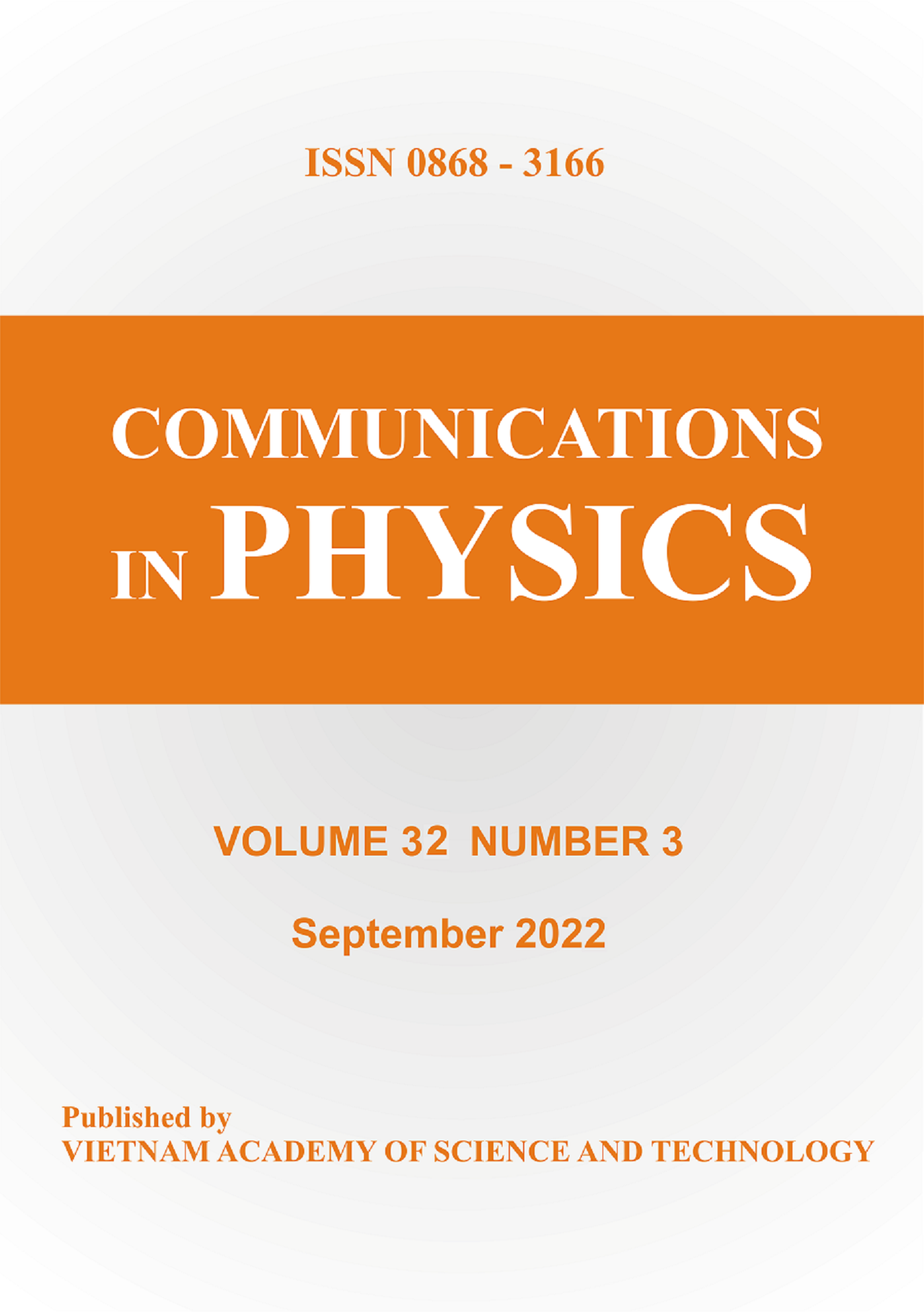Thermodynamic Properties of Free Standing Thin Metal films Investigated Using Statistical Moment Method: Temperature and Pressure Dependence
Author affiliations
DOI:
https://doi.org/10.15625/0868-3166/24/2/3731Keywords:
moment method, thermodynamic properties, high pressure, equation of state, thin filmAbstract
The moment method in statistical dynamics \textit{(SMM)} is used to study thermodynamic properties of free standing thin metal films with face-centered cubic structure (fcc) taking into account the anharmonicity effects of the lattice vibrations and hydrostatic pressures. The explicit expressions of the lattice constant, thermal expansion coefficient, and specific heats at the constant volume and those at the constant pressure, \(C_V\) and \(C_P\) of the metal thin films are derived in closed analytic forms in terms of the power moments of the atomic displacements. The thermodynamic quantities of Au, Ag, Cu and Al metal thin films are calculated as a function of the temperature and pressure, and they are in good agreement with the corresponding results obtained from other theoretical calculations and experimental values. The effective pair potentials work well for the calculations of fcc metal thin films.Downloads
Metrics
References
L. H. Liang. and B. Li, Physical Review B, 73 (15) (2006), 153303 DOI: https://doi.org/10.1103/PhysRevB.73.153303
Z. Kolska et al., Materials Letters, Materials Letters, 64 (2010), 1160-1162 DOI: https://doi.org/10.1016/j.matlet.2010.02.038
H. Kahn et al., J. Mater. Res., 17 (7) (2002), 1855-1862 DOI: https://doi.org/10.1557/JMR.2002.0274
Z. Mei-Qiong et al., Chin. Phys. Lett., 25 (2) (2008), 563 DOI: https://doi.org/10.1088/0256-307X/25/2/057
F. S. Tehrani et al., J. Mater Sci: Mater Electron, (2012), doi 10.1007/s10854-012-0934-z
Feng Gao et al., Tribol Lett., 31 (2008), 99–106, doi 10.1007/11249-008-9342-1 DOI: https://doi.org/10.1007/s11249-008-9342-1
Can Wang et al., Thin Solid Films 485 (2005), 82– 89 DOI: https://doi.org/10.1016/j.tsf.2005.03.055
J.A. Pérez et al., J. Phys.: Conf. Ser., 274 (1) (2011), 012119 doi:10.1088/1742-6596/274/1/012119 DOI: https://doi.org/10.1088/1742-6596/274/1/012119
Ju-Hyung Kim et al., Organic Electronics, 11 (2010), 964–968 DOI: https://doi.org/10.1016/j.orgel.2010.02.015
C. R. Cho et al., Cryst. Res. Technol., 30 (6) (1995), 873-880 DOI: https://doi.org/10.1002/crat.2170300627
K. S. Rothenberger et al., Jour. Memb. Sci., 244 (1–2) (2004), 55–68 DOI: https://doi.org/10.1016/j.memsci.2004.06.036
N. Tang and V. V. Hung: Phys. Status Solidi B, 149 (1988), 511 DOI: https://doi.org/10.1002/pssb.2221490212
N. Tang and V. V. Hung: Phys. Status Solidi B, 161 (1990), 165 DOI: https://doi.org/10.1002/pssb.2221610115
V. V. Hung and N. T. Hai: Int. J. Mod. Phys. B, 12 (1998) 191 DOI: https://doi.org/10.1142/S0217979298000144
V. V. Hung, D. D. Phuong and N. T. Hoa, Com. Phys., 23 (4) (2013), 301–311 DOI: https://doi.org/10.15625/0868-3166/23/4/3351
R. B. Capaz, G. C. de AraD újo, B. Koiller and J. P. von der Weid: J. Appl. Phys., 74 (1993), 5531 DOI: https://doi.org/10.1063/1.354211
M. N. Mazomedov, J. Fiz. Khimic, 61 (1987), 1003 DOI: https://doi.org/10.2466/pr0.1987.61.3.1003
Madan Singh et al., Nanoscience and Nanotechnology, 2 (6) (2012), 20–207
Madan Singh, Moruti Kao., Advances in Nanoparticles, 2 (2013), 350–357 DOI: https://doi.org/10.4236/anp.2013.24048
R Kumar and Munish Kumar., Indian Journal of Pure and Appl. Phys., 51 (2013), 87–93
V. V. Hung and N. T. Hoa: AJSTD Issues 23 (1-2) (2006), 27-42 DOI: https://doi.org/10.29037/ajstd.86
O. Kraft and W. D. Nix., Journal of Appl. Phys., 83 (1998), 3035-3038 DOI: https://doi.org/10.1063/1.367118
R.O. Simmons and R.W. Balluffi, Phys. Rev., 117 (1960), 52 DOI: https://doi.org/10.1103/PhysRev.117.52
N. T. Hoa, Doctor of Philosophy Thesis, HNUE., (2007)
Downloads
Published
How to Cite
Issue
Section
License
Authors who publish with CIP agree with the following terms:- The manuscript is not under consideration for publication elsewhere. When a manuscript is accepted for publication, the author agrees to automatic transfer of the copyright to the editorial office.
- The manuscript should not be published elsewhere in any language without the consent of the copyright holders. Authors have the right to enter into separate, additional contractual arrangements for the non-exclusive distribution of the journal’s published version of their work (e.g., post it to an institutional repository or publish it in a book), with an acknowledgement of its initial publication in this journal.
- Authors are encouraged to post their work online (e.g., in institutional repositories or on their websites) prior to or during the submission process, as it can lead to productive exchanges or/and greater number of citation to the to-be-published work (See The Effect of Open Access).
Accepted 06-05-2014
Published 22-07-2014












